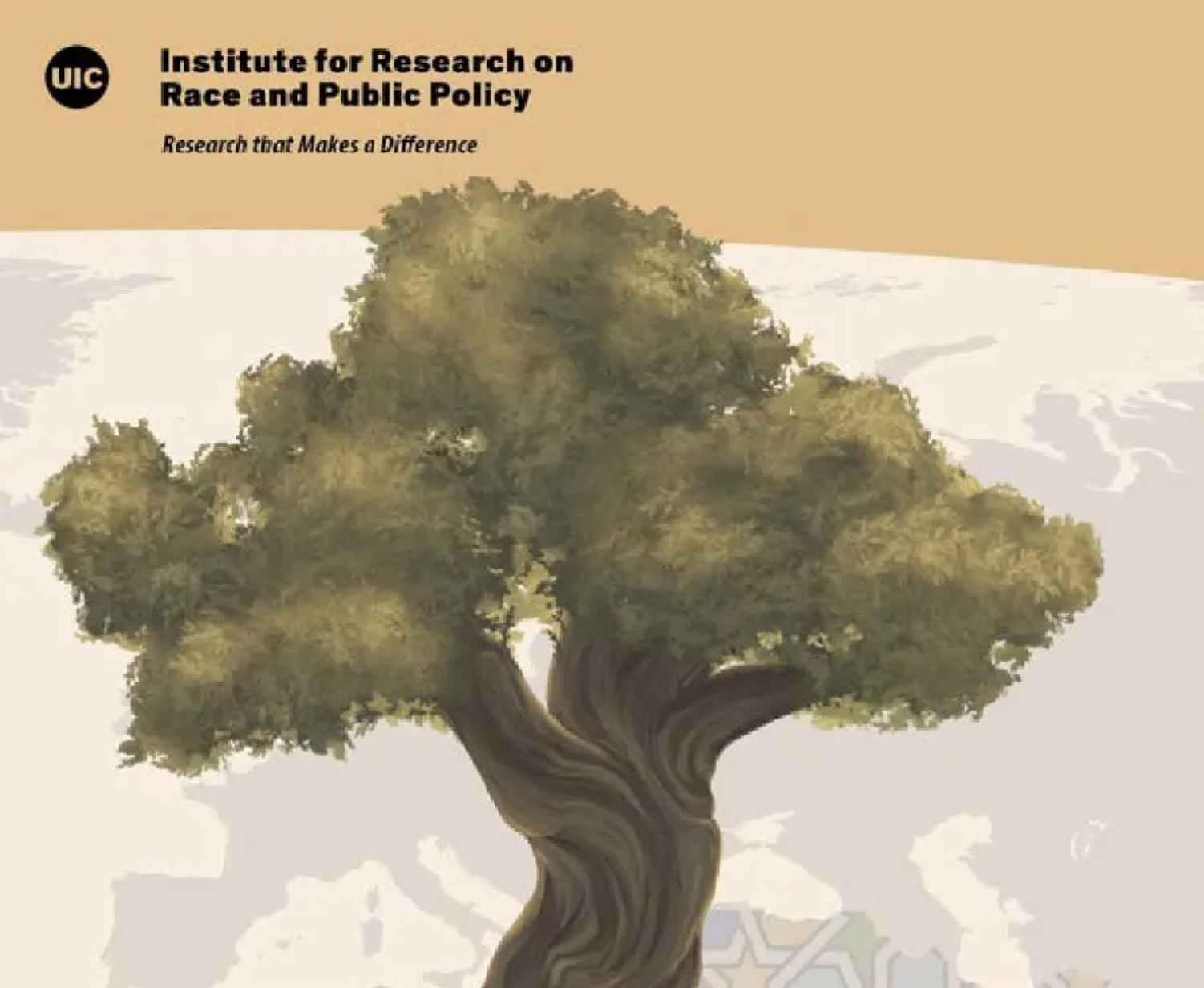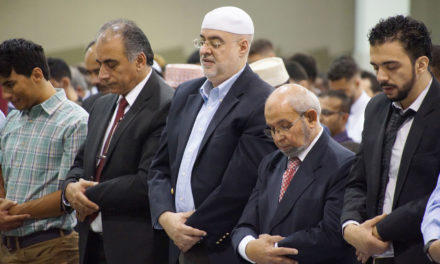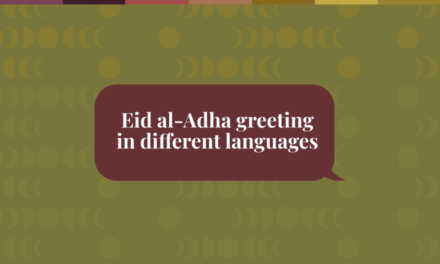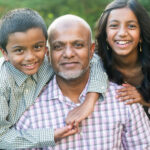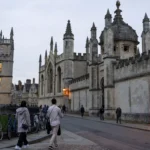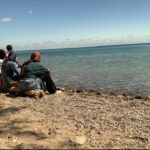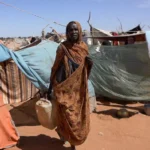CHICAGO (CBS) — Arab Americans across Chicagoland experience discrimination and inequities in all areas of life – from the workplace, to schools, to their interactions with police, according to a first of its kind report released Monday.
The report is by the University of Illinois Chicago’s Institute for Research on Race and Public Policy. It asserts its findings are just the latest examples of how agencies and organizations are failing to meet the needs of Arab Americans – one of the area’s largest communities.
The authors worked with community-based organizations to conduct 12 focus groups and administer a survey to nearly 500 Arab Americans in the area. The report says the findings underscore the need for public and private sectors to create a new racial category, Middle Eastern/North African (MENA), which would require data collection on Arab Americans in health, law enforcement, social services and more.
Without their own category, Arab Americans have long been counted as “white” on government forms. It’s a challenge that social service groups, researchers and residents say make it nearly impossible to gather critical data to understand their needs.
This was no more evident than during the height of the COVID-19 pandemic. A CBS 2 investigation uncovered Arab Americans were among those dying at high rates, but the government did not have a separate category tracking this information like it does for other groups. With no hard data, community organizations struggled to obtain grants for resources.
“This is part of our continuous struggle for the past 20 years that we’ve started this organization,” said Itedal Shalabi, co-founder of Arab American Family Services. “We continuously have to chase the funding, we continuously have to knock on people’s doors, we continuously have to say, ‘Here’s a community that’s in dire need.'”
According to U.S. Census data, more than 100,000 Arab Americans live in Chicagoland, making up about 90 percent of all Arab Americans in Illinois. Due to the lack of a category and comprehensive data, this number is believed to be an undercount.
The UIC study aims to examine the experiences of this community through a historical lens, tracing the first Arab American immigrants in Chicago to 1899. It discusses how, since then, this community has uniquely experienced both hypervisibility and invisibility. While stereotypes and discrimination make Arab Americans highly visible in many spaces, they are often invisible because their experiences are not counted in official data, the report said.
“The inclusion of Arab Americans in the white racial category has caused them to be historically excluded from mainstream conversations about racism and also makes it very difficult to identify, much less measure quantitatively, the distinct patterns in experiences and outcomes for this group, rendering their lives and needs invisible,” the authors wrote.
Key findings
With a goal to gather quantitative data for the first time on this group in Chicagoland, the team of researchers and community organizations administered a survey to 496 Arab Americans between December 2020 and September 2021. Survey respondents reported high levels of stereotyping and prejudice. Some of the findings include:
- 1 in 4 people said organizations, such as businesses, government offices and schools, are not at all effective in meeting their needs. While mosques and non-profit service agencies were viewed favorably among respondents, 30 percent said the government and their workplaces are not effective in meeting their needs. “These responses help us to understand how the lack or presence of Arab American staff in organizations directly impacts Arab Americans’ experiences as they navigate everyday life,” the authors wrote.
- 1 in 4 said they experienced stereotyping and prejudice from their boss.
- 1 in 5 experienced stereotyping and prejudice from the police.
- 39 percent experienced threatening words or gestures due to being Arab; 38 percent reported experiencing verbal insults or abuse; 20 percent reported experiencing vandalism; 14 percent reported experiencing a physical attack; and 14 percent experiencing loss of employment.
Survey respondents detailed disturbing examples of anti-Muslim and anti-Arab racism, including being called racial slurs and being harassed by Transportation Security Administration workers.
One woman said she chose to remove her hijab after the 9/11 terror attacks “due to the public reaction … this included people yelling ‘Go back to Afghanistan,’ giving the middle finger, and stares in public that were too much for me to handle at 15,” the report said.
Another woman described an interaction with police where she was pulled over in her minivan for an expired license sticker. The report said the routine traffic stop “escalated to an arrest. She was yelled at, told to get out of her car, and forced to remove her hijab. When she asked for a female officer due to fear, the officer ‘became irate…extremely violent’ and arrested her,” cuffing her wrists so tightly that she had welts.
“I can honestly say it has been traumatizing for me,” the woman said in the survey. “I am a mother of 5, a law-abiding citizen who drives a minivan and I have been treated like a hardened criminal.”
The authors wrote in the report, “In sum, verbal assault, threats, stereotyping, and prejudice are very much a part of everyday life for Arab Americans in Chicagoland.”
The 12 focus groups allowed researchers to dive deeper and gather additional anecdotal information on these experiences. They learned many Arab Americans are victims of physical and verbal bullying in schools, and officials often failed to intervene. This includes the targeting of women wearing the hijab and the targeting of Palestinian Americans specifically.
“Chicagoland participants emphasized that the repression of their political opinions in school often took the form of anti-Palestinian racism, whereby teachers and other school staff policed, monitored, and silenced critical discussions of the Israeli occupation of Palestine,” the report said.
These experiences in school often caused students to hesitate before reporting bullying and harassment.
The focus groups also shared similar experiences with law enforcement. In multiple examples, residents reported incidents to police but said they received little to no response. They also said their interactions with police feel “tense,” “demeaning” and “condescending,” and they “never want to ever call the police.”
In addition, the report discussed the community’s fear of being surveilled by law enforcement since the 9/11 terror attacks – a fear that proved to be true by the government’s use of suspicious activity reports in Chicago and across the country, a CBS 2 investigation previously found.
“We have to watch what we say for fear of being reported to police for something so small, or for every day activities,” said 24-year-old Reema Rustom, member of the Arab American Action Network.
The report said the Oak Lawn police beating of 17-year-old Hadi Abuatelah in July 2022 “exacerbated this sentiment” in the community. The police department said the teen was reaching for something in a bag as officers tried to arrest him, and that they found a loaded gun inside that bag. But a lawsuit filed by his family accuses the police department of excessive force and “extreme and outrageous conduct” by punching him. Viral cell phone video showed officers repeatedly punched Abuatelah while he was pinned to the ground.
“Overall, the survey provides additional local insight on the broad patterns we generally in scholarship on Arab Americans,” the report says, adding that people reported “how their everyday life is framed by fear and threats due to hypervisibility – where they are treated with suspicion and hostility due to being seen through the lens of stereotypes.”
What it means to be counted
The authors found a lack of data and historical understanding about Arab Americans makes it difficult for their communities to have their needs met. This results in a “data desert,” further emphasizing the need for a MENA category across public and private sectors.
Chicago activists, researchers and social service organizations have long been at the forefront of a decades-long fight, pushing the federal government to create a MENA category for the Census. Local governments have pointed to a lack of category on the federal level when asked why they have not created their own MENA category. It would also require a new state law to change government databases and systems at the local level.
But the report said the creation of a category would only be the first step. Once Arab Americans are counted, agencies must increase access to resources to ensure equity, especially since this community has a higher rate of poverty, lower household median income and higher rates of unemployment compared to Chicagoland residents overall.
Ultimately, the report said the research “reaffirms the limitations of existing data on Arab American experiences with racism” and underscores the harm of not having a MENA category.
“Without being counted, community organizations find it challenging to access adequate funding or advocate for specific services and opportunities to address the very real challenges that impact Arab American communities such as poverty, discrimination, and access to housing, education, and healthcare,” the authors wrote. “Without being counted, community members experience harms that go unnoticed by the larger public.”
The report is authored by Nadine Naber, Nicole Nguyen, Chris D. Poulos, Iván Arenas, Louise Cainkar, Nazek Sankari, Amanda E. Lewis, Nina Shoman-Dajani, and Zeina Zaatari. The authors partnered with the Arab American Action Network, the Arab American Family Services, the Middle Eastern Immigrant and Refugee Alliance, Sanad Social Services and the Syrian Community Network.
By Samah Assad
